Letter-sound association Letter Recognition Worksheets for Ages 3-7
9 filtered results
-
From - To
Enhance your child's early literacy skills with our engaging Letter-Sound Association and Letter Recognition Worksheets designed for ages 3 to 7. These interactive resources introduce young learners to the essential connection between letters and their corresponding sounds, fostering a strong foundation for reading and writing. With a variety of fun activities, including matching games and tracing exercises, your child will enjoy exploring the alphabet while developing critical phonetic recognition. Perfect for at-home practice or classroom activities, our worksheets encourage curiosity and boost confidence in reading. Start your child's literacy journey today with our thoughtfully crafted materials!
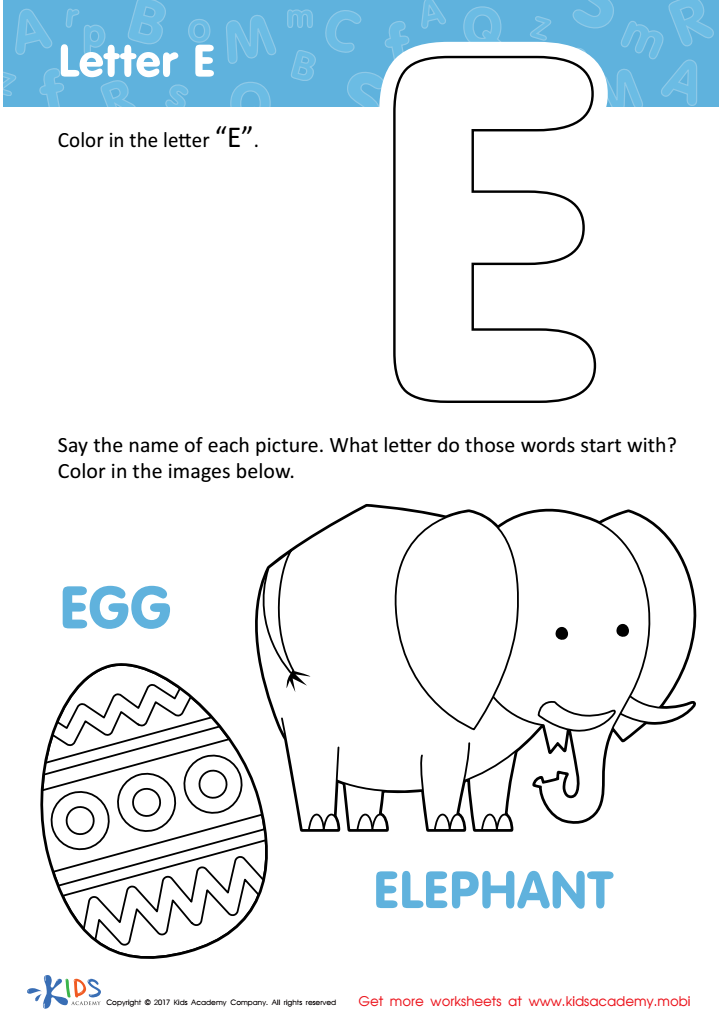

Letter E Coloring Sheet


Letters J and K Tracing Worksheet
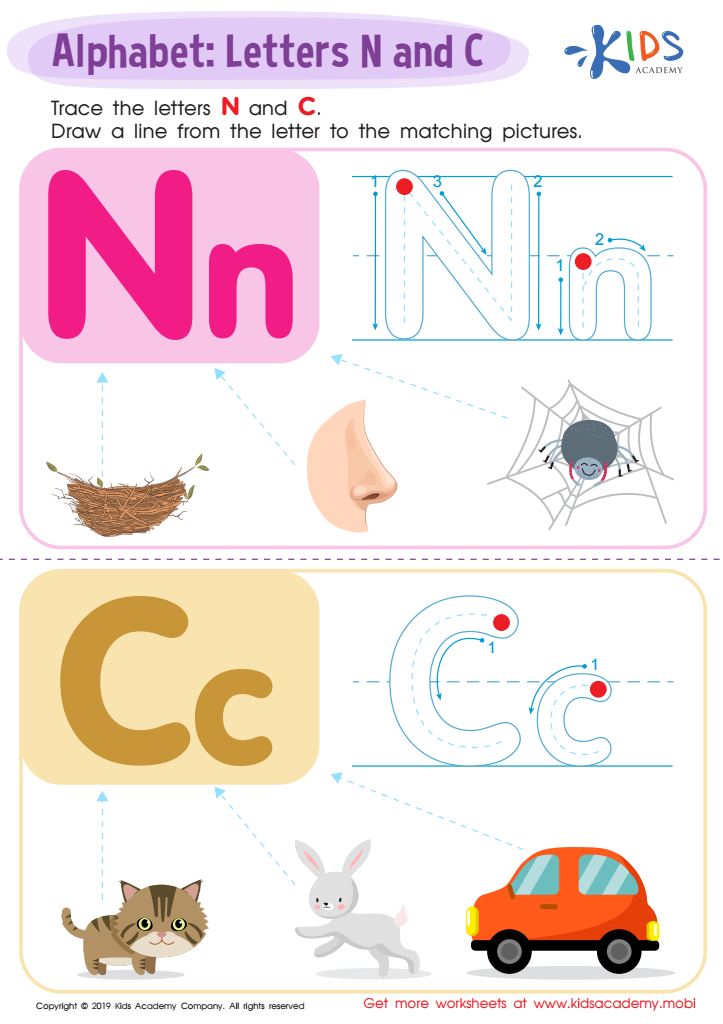

Letter N and C Tracing Worksheet
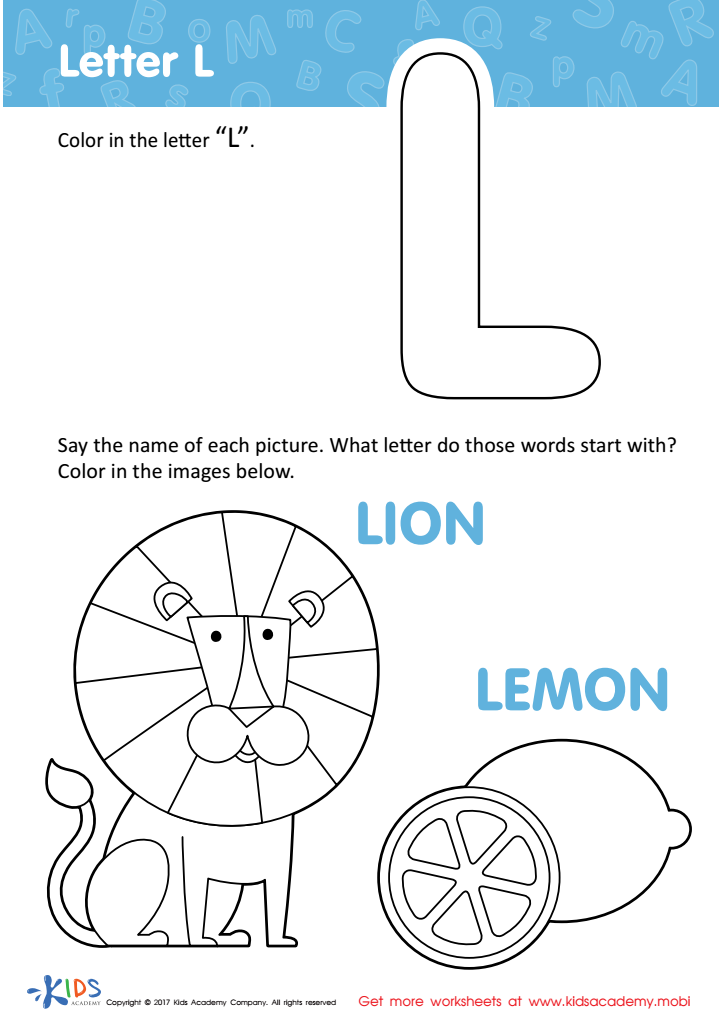

Letter L Coloring Sheet
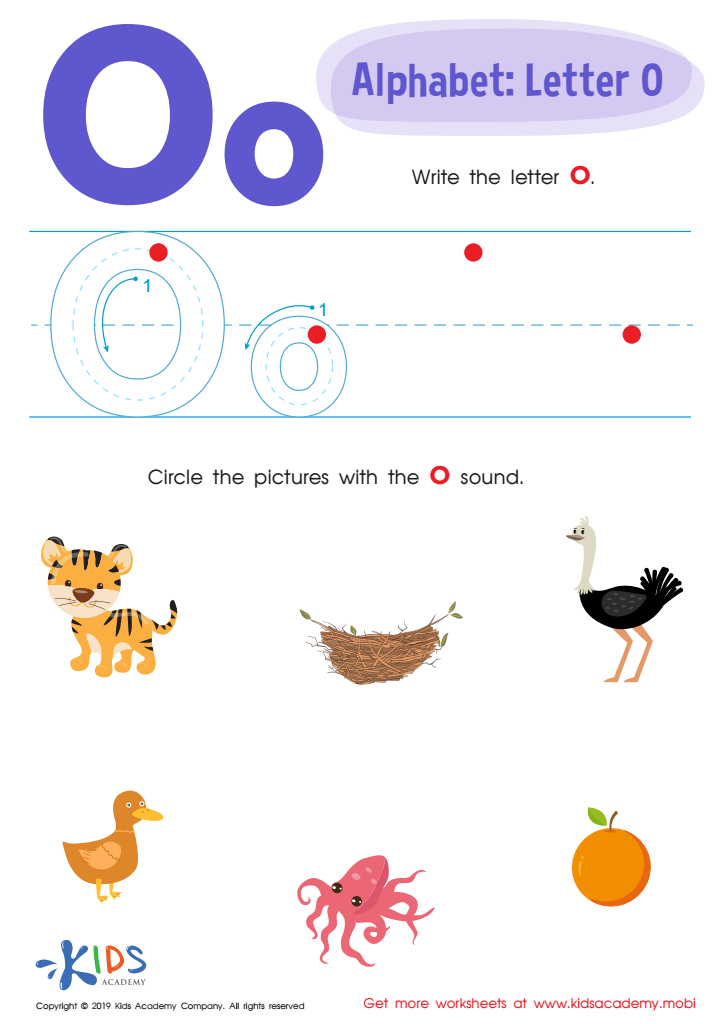

Letter O Tracing Worksheet
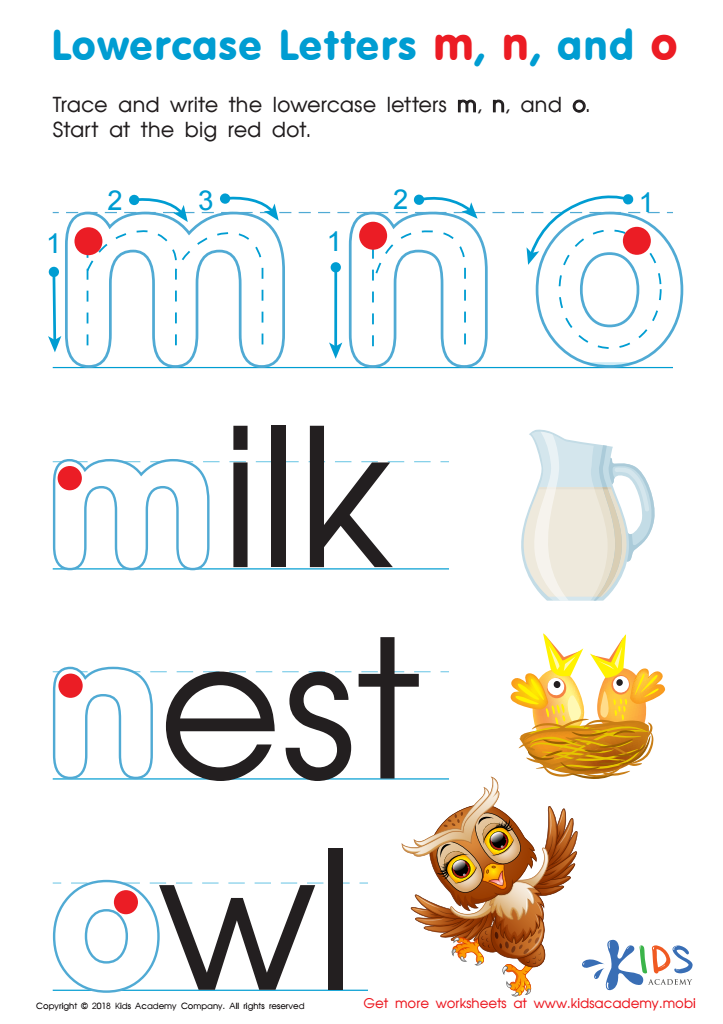

Lowercase Letters m n o Worksheet
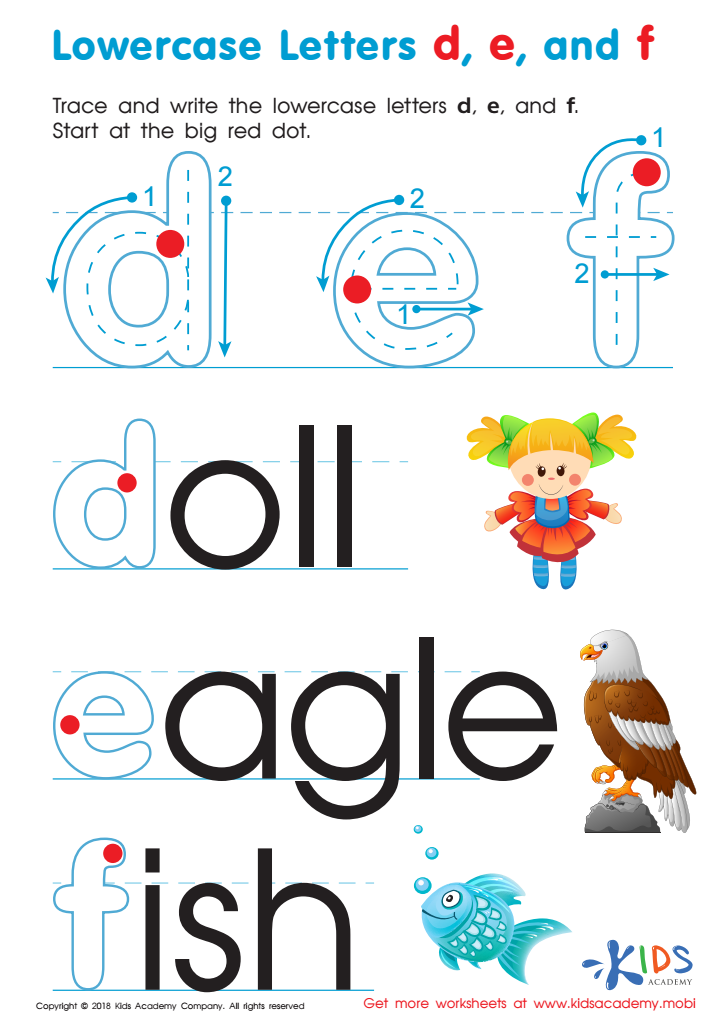

Lowercase Letters d e f Worksheet
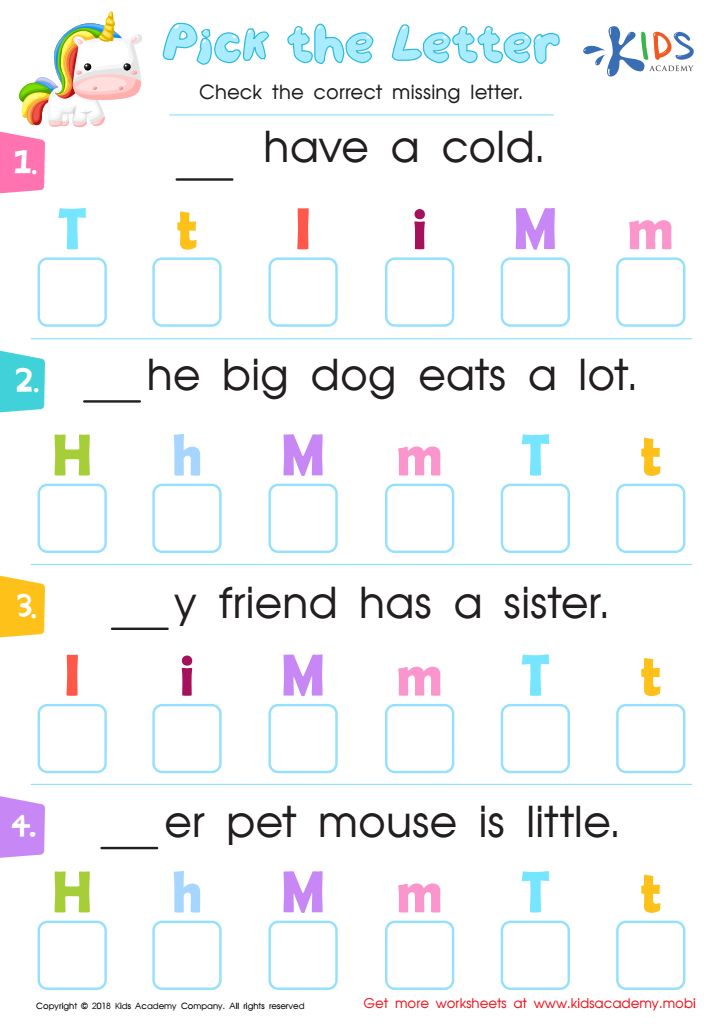

Pick the Letter Worksheet
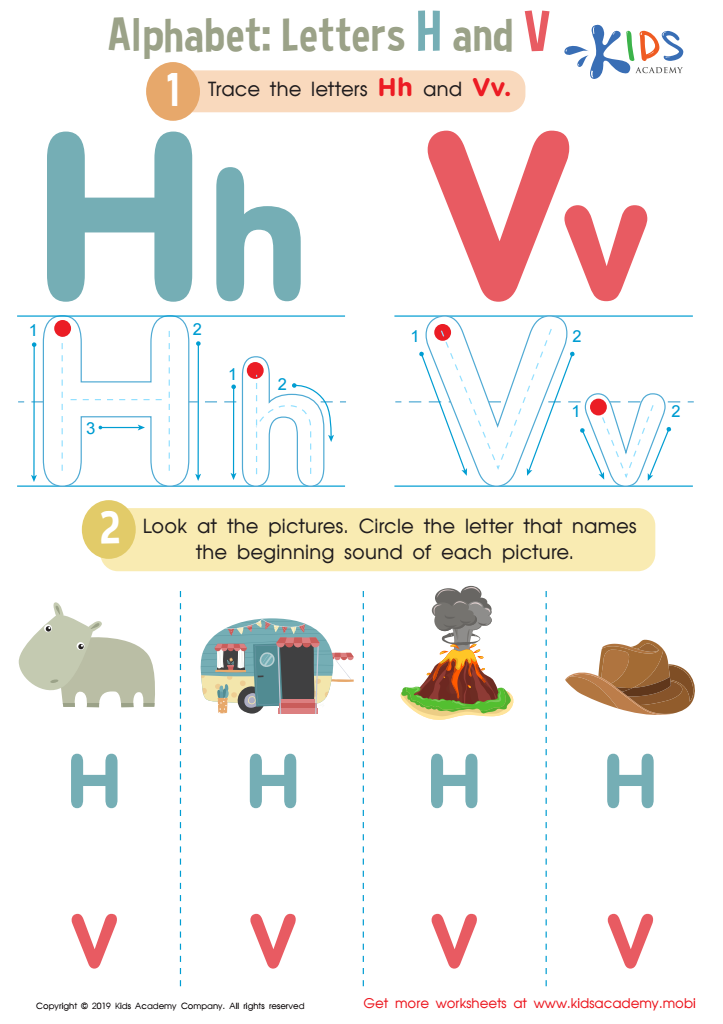

Letters H and V Tracing Worksheet
Letter-sound association and letter recognition are fundamental skills in early childhood literacy development that significantly impact a child's reading and writing abilities. For children aged 3-7, mastering these skills provides a solid foundation for future learning. Demonstrating letter-sound associations helps children understand that letters correspond to specific sounds, which is essential for decoding words as they begin to read.
When children can recognize letters both visually and phonetically, they gain confidence in their ability to engage with text, which encourages a love for reading. Early exposure to these concepts allows for greater vocabulary development and enhances language skills, contributing to overall communication abilities.
Additionally, letter recognition supports critical cognitive skills such as memory, attention, and processing. Parents and teachers play a key role in nurturing these competencies through playful activities, games, and routine reading sessions, laying the groundwork for successful academic journeys.
Ultimately, prioritizing letter-sound association and letter recognition is vital—it not only aligns with literacy goals but also fosters cognitive growth, enabling children to become enthusiastic, proficient readers and writers in their formative years, setting a trajectory for lifelong learning.

 Assign to My Students
Assign to My Students

















